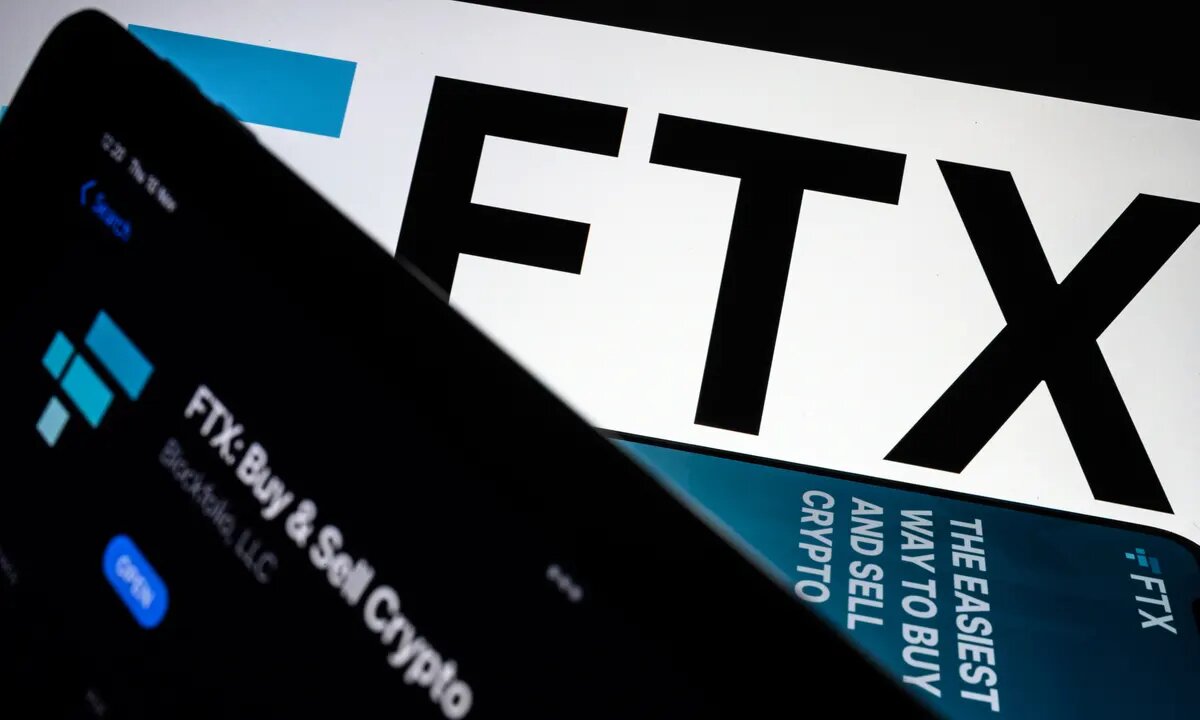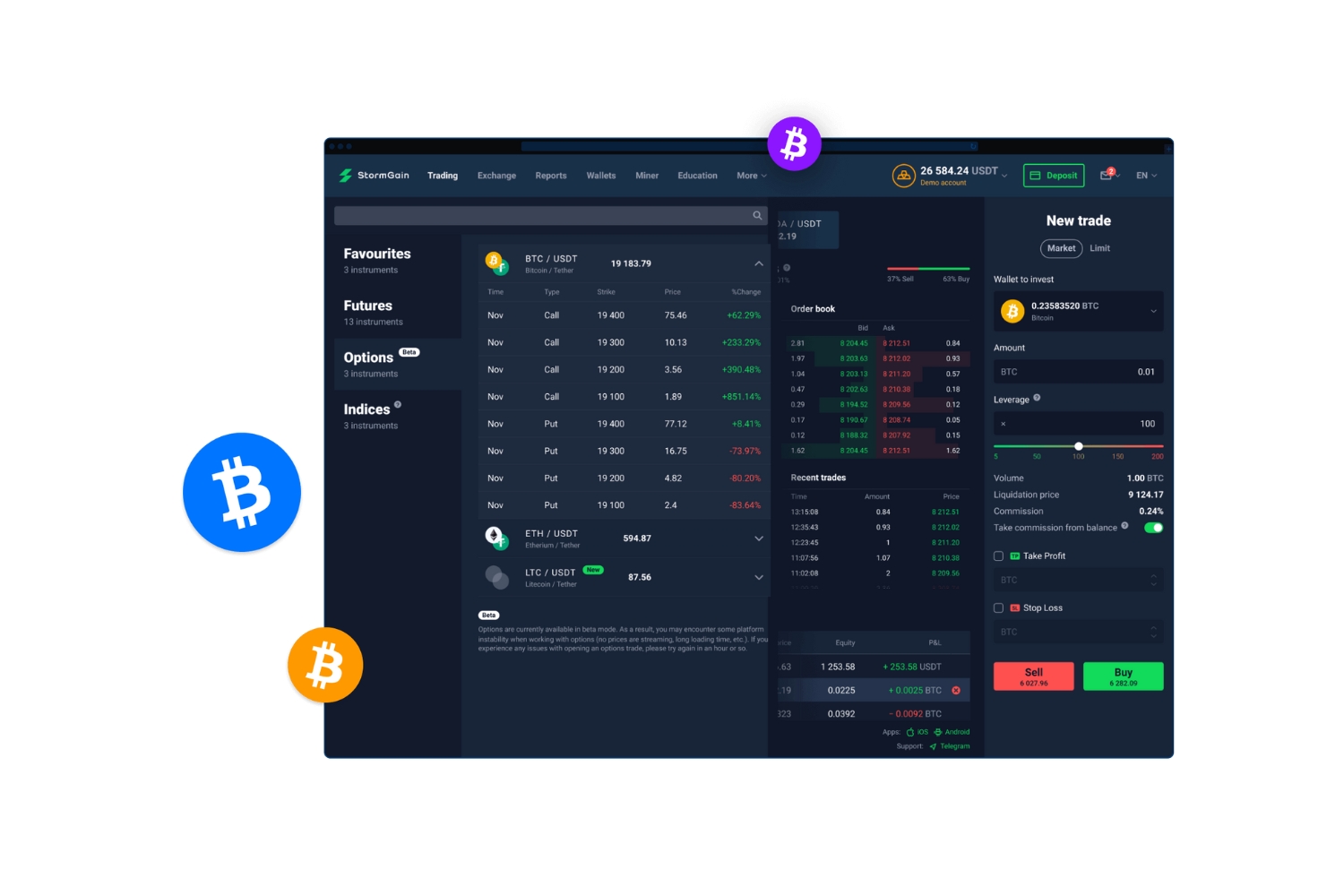Introduction
Leverage trading has revolutionized the world of cryptocurrency trading, allowing investors to amplify their potential returns by borrowing funds to make larger trades. With the growing popularity of cryptocurrencies like Bitcoin and Ethereum, leverage trading has become an essential tool for traders looking to maximize their profits in this volatile market.
So, what exactly is leverage trading? How does it work in the world of crypto? And what are the advantages and risks involved? In this article, we will delve into the fascinating world of leverage trading in crypto and provide you with invaluable insights on how to navigate this space successfully.
Leverage trading involves a trader borrowing a certain amount of funds from a platform or an exchange to magnify their trading position. This borrowed money is used to open larger and potentially more profitable positions than what the trader’s own capital allows. It essentially allows traders to control more assets than they could with their own funds alone.
The leverage ratio determines the size of the position a trader can control compared to their own capital. For example, a leverage ratio of 10:1 means that a trader can control a position ten times larger than their own capital. This enables traders to potentially earn larger returns on their investments, as any gains or losses are calculated based on the total value of the leveraged position.
In the world of crypto, leverage trading works similarly to traditional markets. Traders can open leveraged positions on a variety of cryptocurrencies, including Bitcoin, Ethereum, and others, with the goal of profiting from price movements. With leverage trading, even small price fluctuations can result in significant profits or losses, depending on the leverage ratio used.
What is Leverage Trading?
Leverage trading, also known as margin trading, is a trading strategy that allows traders to borrow funds from a platform or an exchange to open positions larger than their own capital. This technique magnifies potential gains or losses, as traders are essentially amplifying their exposure to the market.
With leverage trading, traders can take advantage of the volatility in the cryptocurrency market and potentially increase their profits. Instead of using only their own funds, they can access additional capital provided by the platform or exchange to control larger positions.
For example, let’s say you have $1,000 to invest in Bitcoin, and the exchange offers a leverage ratio of 10:1. With leverage, you can control a position worth $10,000. If the price of Bitcoin increases by 10%, your profit would be $1,000 instead of just $100 if you had only used your own capital.
The concept behind leverage trading is relatively simple, but it’s important to understand that while it offers potential for higher returns, it also comes with increased risk. The higher the leverage ratio, the greater the potential gains, but also the potential losses.
When engaging in leverage trading, it’s essential to have a solid understanding of the market you’re trading in and to carefully manage your risk. While leverage can amplify profits, it can equally magnify losses if trades move against you. Therefore, it’s crucial to implement risk management strategies, set stop-loss orders, and avoid being overly greedy or impulsive.
It’s worth noting that leverage trading is not exclusive to cryptocurrency markets. It is a widely used strategy in traditional financial markets such as stocks, forex, and commodities. However, leverage trading in the cryptocurrency market offers unique advantages and considerations due to the high volatility and 24/7 trading nature of cryptocurrencies.
In the next section, we will explore how leverage trading works specifically in the realm of cryptocurrencies and delve into the mechanics behind it.
How does Leverage Trading Work in Crypto?
Leverage trading in the world of cryptocurrencies operates similarly to leverage trading in traditional markets. Traders have the opportunity to borrow funds from exchanges or platforms and use them to open larger positions than their own capital allows.
When engaging in leverage trading in the crypto market, traders have two crucial components to consider: the leverage ratio and the margin requirement. The leverage ratio determines how much capital a trader can borrow compared to their own funds, while the margin requirement is the minimum amount of collateral or margin that must be maintained in the trading account.
Let’s say you have $1,000 in your trading account, and the exchange offers a leverage ratio of 10:1. This means that you can open a position worth $10,000 with the borrowed funds. The $1,000 from your account acts as margin – the minimum capital required to support the position.
As you enter a leveraged trade, a portion of your funds will be used as collateral, and the rest will be borrowed. The borrowed funds are known as the leverage amount, and they enable you to open a larger position.
It’s important to note that leverage trading in the crypto market involves interest charges on the borrowed funds. These charges are often referred to as funding rates and are typically incurred for as long as the position remains open.
Traders need to closely monitor their position and margin level to ensure they meet the requirements set by the exchange or platform. If the position goes against the trader and the account’s margin level falls below the required maintenance margin, the trader could face a margin call. A margin call requires the trader to either add more funds to the account or close the position to avoid potential liquidation.
Understanding the mechanics of leverage trading in the cryptocurrency market is crucial, as it can greatly impact trading outcomes. It’s important to choose a reputable exchange or platform that offers leverage trading options and provides clear information about leverage ratios, margin requirements, and funding rates.
In the next section, we will explore the advantages and benefits of leverage trading in the cryptocurrency market.
Advantages of Leverage Trading in Crypto
Leverage trading in the cryptocurrency market offers several advantages that make it an appealing option for traders looking to maximize their profits:
- Increased Profit Potential: By using leverage, traders can control larger positions than their own capital allows. This amplifies potential gains, enabling traders to profit from even small price movements in the cryptocurrency market.
- Access to Volatile Markets: Cryptocurrencies are known for their high volatility, which can provide immense profit opportunities. Leverage trading gives traders the ability to access and trade these volatile markets, allowing them to capitalize on price fluctuations.
- Diversification: Leverage trading allows traders to diversify their portfolio and trade multiple cryptocurrencies simultaneously. This offers the opportunity to spread risk and potentially benefit from different market trends.
- Lower Capital Requirements: With leverage trading, traders can enter larger positions with a smaller amount of capital. This opens up opportunities for traders with limited funds to participate and potentially profit from the cryptocurrency market.
- Hedging Possibilities: Leverage trading also enables traders to hedge their positions. They can open long and short positions simultaneously, allowing them to profit from both upward and downward price movements in the market.
- 24/7 Market Access: The cryptocurrency market operates 24/7, providing traders with ample trading opportunities. Leverage trading allows traders to take advantage of these continuous market movements without being limited by traditional market hours.
However, it’s important to remember that leverage trading in crypto comes with inherent risks that need to be carefully managed. While the potential for higher profits is enticing, it’s crucial to have a solid understanding of the market, implement effective risk management strategies, and carefully monitor positions and margin levels.
In the next section, we will discuss the risks and considerations involved in leverage trading crypto.
Risks and Considerations in Leverage Trading Crypto
While leverage trading in the cryptocurrency market offers the potential for higher profits, it is important for traders to be aware of the risks and considerations involved:
- High Volatility: Cryptocurrencies are known for their extreme price volatility. While this volatility can lead to substantial profits, it can also result in significant losses. Price movements can be unpredictable and sudden, especially during periods of market instability.
- Increased Risk: Leverage trading amplifies both profits and losses. While using leverage allows traders to control larger positions, it also exposes them to higher risk. A small adverse price movement can wipe out a significant portion, or even all, of the trader’s capital.
- Liquidation Risk: When engaging in leverage trading, traders must be vigilant about maintaining the required margin levels. If the market moves against the trader and the margin level falls below the maintenance margin, the trader may face a margin call and potential liquidation of their position.
- Interest and Fees: Leverage trading typically incurs interest charges on the borrowed funds. Traders need to be mindful of these funding rates, as they can impact their overall profitability. Additionally, platforms or exchanges may charge fees for leverage trading, which can eat into potential profits.
- Psychological Challenges: Trading with leverage can be emotionally challenging. The potential for higher returns may lead to irrational decision-making, such as taking on excessive risk or holding onto losing positions longer than necessary. It’s essential to maintain discipline and stick to a well-defined trading plan.
- Limited Control: When using leverage, traders have limited control over their positions. Large price movements in the opposite direction can lead to margin calls and forced liquidations, even if the trader believes the market will eventually move in their favor. It’s important to have a clear risk management strategy in place.
Before engaging in leverage trading, it is crucial to thoroughly understand the risks involved and to consider factors such as market conditions, personal financial situation, and trading experience. Proper risk management, including setting stop-loss orders, using appropriate leverage ratios, and diversifying your trades, can help mitigate some of the risks associated with leverage trading in the crypto market.
In the next section, we will explore popular leverage trading strategies that can be applied in the cryptocurrency market.
Popular Leverage Trading Strategies in Crypto
When engaging in leverage trading in the cryptocurrency market, traders have access to various strategies that can help them maximize their profits. It’s important to note that different strategies work for different market conditions, and it’s crucial to adapt and refine your approach based on the specific cryptocurrency and market trends. Here are some popular leverage trading strategies:
- Trend Following: This strategy involves identifying and trading in the direction of the prevailing trend. Traders look for upward or downward trends and open positions accordingly, aiming to ride the trend until it shows signs of exhaustion. Technical analysis tools and indicators can be helpful in identifying trends and confirming entry and exit points.
- Breakout Trading: Breakout trading strategy involves identifying key support and resistance levels and placing trades when the price breaks out of these levels. Traders enter long positions when the price breaks above resistance and short positions when the price breaks below support. This strategy aims to capture significant price movements that occur after the price breaks out of a consolidation phase.
- Mean Reversion: Mean reversion trading strategy involves identifying overbought or oversold conditions in the market and positioning trades to profit from price corrections. Traders look for extremes in price movements and anticipate a reversal back to the mean or average price. This strategy relies on the assumption that prices will eventually revert to their average values.
- Scalping: Scalping is a short-term trading strategy that aims to capture small price movements and generate quick profits. Traders enter and exit multiple trades throughout the day, taking advantage of even the smallest price fluctuations. This strategy often relies on a high-frequency trading approach and requires close monitoring of the market.
- Arbitrage: Arbitrage is a strategy that involves taking advantage of price discrepancies between different cryptocurrency exchanges. Traders buy a cryptocurrency on one exchange where the price is lower and sell it simultaneously on another exchange where the price is higher, profiting from the price difference. This strategy typically requires advanced technical knowledge and fast execution.
It’s important to note that leverage trading strategies should be backed by thorough research, analysis, and risk management. Traders should understand the specific characteristics of the cryptocurrency they are trading, closely monitor market conditions, and adapt their strategies accordingly. Additionally, it’s vital to have a clear plan in place, including entry and exit points, stop-loss orders, and profit targets.
In the next section, we will explore some of the top platforms for leverage trading in the cryptocurrency market.
Top Platforms for Leverage Trading Crypto
When it comes to leverage trading in the cryptocurrency market, choosing the right platform is crucial. Here are some of the top platforms known for their leverage trading features:
- BitMEX: BitMEX is one of the most popular platforms for leverage trading in crypto. It offers leverage of up to 100x and supports a wide range of cryptocurrencies. BitMEX is known for its user-friendly interface and advanced trading features, including order types like market orders, limit orders, and stop orders.
- Bybit: Bybit is another well-known platform for leverage trading. It offers leverage of up to 100x and supports Bitcoin, Ethereum, and other major cryptocurrencies. Bybit provides a user-friendly trading interface and offers features like conditional orders, stop-loss orders, and take-profit orders.
- Binance: Binance, one of the world’s largest cryptocurrency exchanges, also offers leverage trading through Binance Futures. It supports leverage of up to 125x and offers a wide range of trading pairs. Binance Futures provides advanced trading tools, including charting options, trading indicators, and risk management features.
- Bitfinex: Bitfinex is a well-established cryptocurrency exchange that offers leverage trading with up to 5x leverage. It provides a user-friendly trading platform and supports a variety of trading pairs. Bitfinex also offers advanced trading features such as margin trading, order types, and customizable trading interface.
- Kraken: Kraken is a reputable cryptocurrency exchange that offers leverage trading with up to 5x leverage. It provides a secure and easy-to-use trading platform, supporting various cryptocurrencies. Kraken offers advanced trading features and tools, including stop-loss orders, take-profit orders, and real-time market data.
When selecting a platform for leverage trading, it’s important to consider factors such as fees, liquidity, security measures, customer support, and the range of cryptocurrencies available for trading. It’s also recommended to start with lower leverage ratios and gradually increase them as you gain experience and confidence in your trading abilities.
It’s worth noting that while these platforms offer leverage trading, they also come with risks. Traders should thoroughly understand the platform’s terms, conditions, and risk management features before engaging in leverage trading.
In the next section, we will provide some tips for successful leverage trading in the cryptocurrency market.
Tips for Successful Leverage Trading in Crypto
Leverage trading in the cryptocurrency market can be both rewarding and challenging. Here are some important tips to help you navigate the world of leverage trading and increase your chances of success:
- Education and Research: Gain a solid understanding of the cryptocurrency market, including the factors that drive price movements. Stay updated on news, market trends, and technological developments in the crypto space.
- Start with a Demo Account: If you’re new to leverage trading, consider starting with a demo account to practice your trading strategies and get familiar with the platform’s features without risking real funds.
- Develop a Trading Plan: Before entering any trade, have a well-defined trading plan in place. Determine your risk tolerance, set profit targets, and decide on appropriate leverage ratios. Stick to your plan and avoid impulsive decision-making.
- Implement Risk Management: Manage your risk effectively by setting stop-loss orders to limit potential losses. Use position sizing techniques to ensure you’re not risking an excessive portion of your capital on any single trade.
- Stay Disciplined and Control Emotions: Emotions can adversely affect trading decisions. Avoid being swayed by fear or greed. Stick to your trading plan and make rational, objective decisions based on market analysis rather than emotions.
- Use Technical Analysis: Incorporate technical analysis tools and indicators to identify potential entry and exit points. Analyze price charts, patterns, support, and resistance levels, and use indicators to confirm signals.
- Follow Risk-Reward Ratios: Ensure that your potential rewards outweigh potential risks. Aim for positive risk-reward ratios in your trades to maximize profitability over the long term.
- Stay Informed About Funding Rates: Keep an eye on the funding rates charged by the platform for leverage trading. These rates can affect your profitability, especially if you hold your positions for extended periods.
- Practice Patience and Discipline: Be patient and don’t chase trades or try to force profits. Wait for the right opportunities and maintain discipline in executing your trading strategy.
- Continuously Learn and Adapt: The cryptocurrency market is constantly evolving. Stay open to learning, adapt your strategies as market conditions change, and continuously improve your trading skills.
Remember that leverage trading involves risks, and there are no guarantees of profits. It is important to start with smaller leverage ratios, gradually increase your position sizes as you gain experience and confidence, and never trade with funds you cannot afford to lose.
By implementing these tips and maintaining a disciplined approach, you can improve your chances of success in leverage trading in the cryptocurrency market.
Now, let’s summarize the key points discussed in this article.
Conclusion
Leverage trading in the cryptocurrency market provides traders with the opportunity to amplify their potential profits by accessing borrowed funds to open larger positions. While leverage trading offers enticing advantages, such as increased profit potential, access to volatile markets, and lower capital requirements, it also comes with inherent risks.
Understanding the mechanics of leverage trading, including the leverage ratio, margin requirements, and funding rates, is crucial for successful trading. Traders must carefully manage their risk, implement effective risk management strategies, and continuously educate themselves about the market and trading techniques.
Choosing a reputable platform for leverage trading is essential. Platforms such as BitMEX, Bybit, Binance, Bitfinex, and Kraken offer leverage trading options and provide necessary features, including advanced trading tools, security measures, and a wide selection of cryptocurrencies.
To succeed in leveraged trading, it’s important to develop a trading plan, implement risk management strategies, practice discipline, and stay updated with market trends. Technical analysis can be helpful in identifying entry and exit points, and traders should aim for positive risk-reward ratios in their trades.
Remember that leverage trading involves inherent risks and potential losses. Always trade with caution and only use funds that you can afford to lose. Continuously monitor your positions, margin requirements, and maintain a disciplined approach to trading.
By following these guidelines and adapting your strategies to the specific cryptocurrency and market conditions, you can navigate the world of leverage trading in crypto more efficiently and increase your chances of success.

























